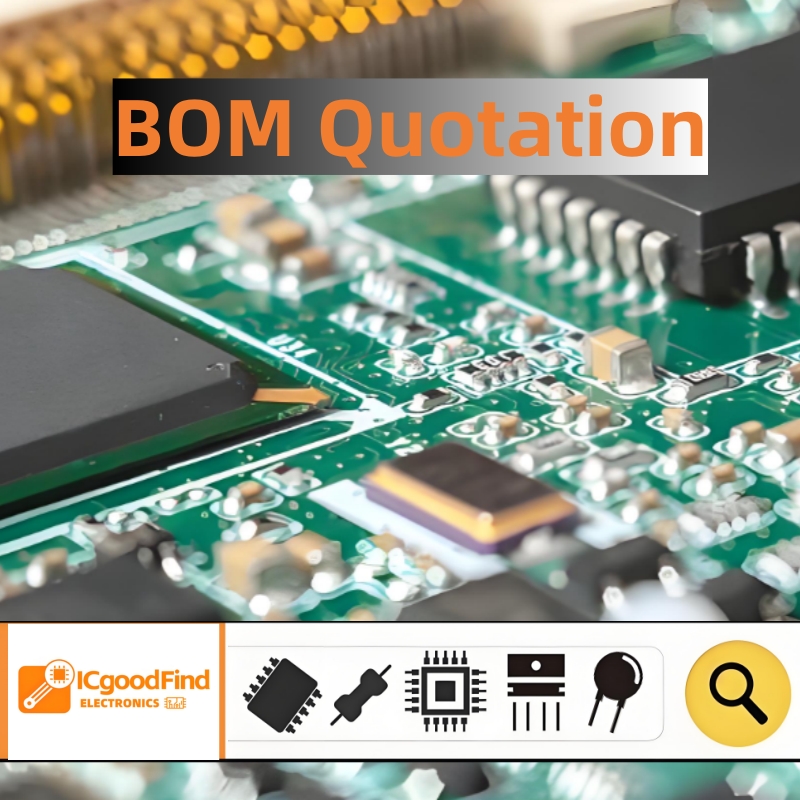**AD6634BBC: A Comprehensive Technical Overview and Application Guide**
The **AD6634BBC** stands as a high-performance, quad digital down-converter (DDC) and up-converter (DUC) core, representing a pivotal component in modern software-defined radio (SDR) and wireless infrastructure systems. Engineered by Analog Devices, this integrated circuit is designed to handle the demanding signal processing tasks required in multi-carrier, multi-standard base stations, including 4G LTE and 5NR. Its architecture offers unparalleled flexibility and processing power, making it a cornerstone for developers aiming to push the boundaries of RF signal chain design.
**Architectural Breakdown and Key Features**
At its core, the AD6634BBC integrates four independent, high-speed signal processing channels. Each channel is a sophisticated pipeline capable of both transmission (DUC) and reception (DDC) paths. The device accepts real or complex input data at very high speeds, processes it through its internal stages, and delivers a streamlined output ready for digital-to-analog conversion (DAC) or further digital signal processing (DSP).
The primary technical highlights include:
* **High-Speed Data Interface:** It features a **JESD204B serial interface** for seamless, high-throughput data transfer with data converters (ADCs and DACs), significantly reducing system interconnect complexity compared to older parallel LVDS interfaces.
* **Advanced DDC Functionality:** Each receive channel includes a **48-bit numerically controlled oscillator (NCO)** for precise frequency translation, followed by a programmable decimation filter chain. This chain consists of a five-stage half-band filter and a final 255-tap FIR filter, enabling **exceptional adjacent channel rejection (ACR)** and selectivity.
* **Flexible DUC Capability:** On the transmit side, each channel employs a similar but inverse path. It includes interpolation filtering and a complex mixer for up-conversion, allowing multiple baseband signals to be efficiently combined and translated to an intermediate frequency (IF) before being sent to a DAC.
* **Dynamic Power Management:** The device incorporates sophisticated power-saving modes, allowing power consumption to be scaled dynamically based on the number of active channels and the required processing performance. This is critical for reducing the operational expenditure (OPEX) of base station equipment.

* **Integrated Gain Control:** Each channel is equipped with automatic gain control (AGC) in the receive path and a digital variable gain amplifier (VGA) in the transmit path, providing essential tools for maintaining optimal signal power levels throughout the system.
**Typical Application Scenarios**
The versatility of the AD6634BBC makes it suitable for a wide array of applications. Its most prominent use is in the wireless infrastructure market.
* **Macro and Micro Base Stations:** It is ideal for processing multiple carriers in a single radio unit, supporting MIMO (Multiple-Input, Multiple-Output) antenna systems essential for 4G and 5G networks.
* **Multi-Standard Systems:** A single AD6634BBC can simultaneously process signals for different standards (e.g., GSM, WCDMA, LTE, 5G), allowing operators to modernize their networks efficiently.
* **Aerospace and Defense:** Its high performance and flexibility are valuable in military communications, electronic warfare (EW), and radar systems that require robust and adaptable signal processing.
* **Test and Measurement Equipment:** High-end signal analyzers and generators utilize the AD6634BBC to provide wide bandwidth analysis and multi-channel signal generation capabilities.
**Design and Implementation Considerations**
Implementing the AD6634BBC requires careful attention to several factors. System architects must design a robust clocking network to ensure jitter performance meets the stringent requirements of the JESD204B interface. Power supply design is also critical, necessitating clean, well-regulated voltages to achieve the specified signal-to-noise ratio (SNR) performance. Furthermore, configuring the extensive register set of the device via its SPI interface is a complex task, often aided by evaluation software and graphical user interfaces (GUIs) provided by Analog Devices to simplify the filter design and system bring-up process.
ICGOODFIND: The **AD6634BBC** is a **highly integrated and versatile signal processing engine** that empowers designers to build advanced, multi-channel wireless systems. Its blend of **JESD204B interoperability, powerful filtering, and independent channel control** consolidates its status as a critical component for next-generation telecommunications and beyond, effectively reducing design complexity and time-to-market.
**Keywords:** Software-Defined Radio (SDR), Digital Down-Converter (DDC), JESD204B Interface, Wireless Infrastructure, Multi-Carrier
